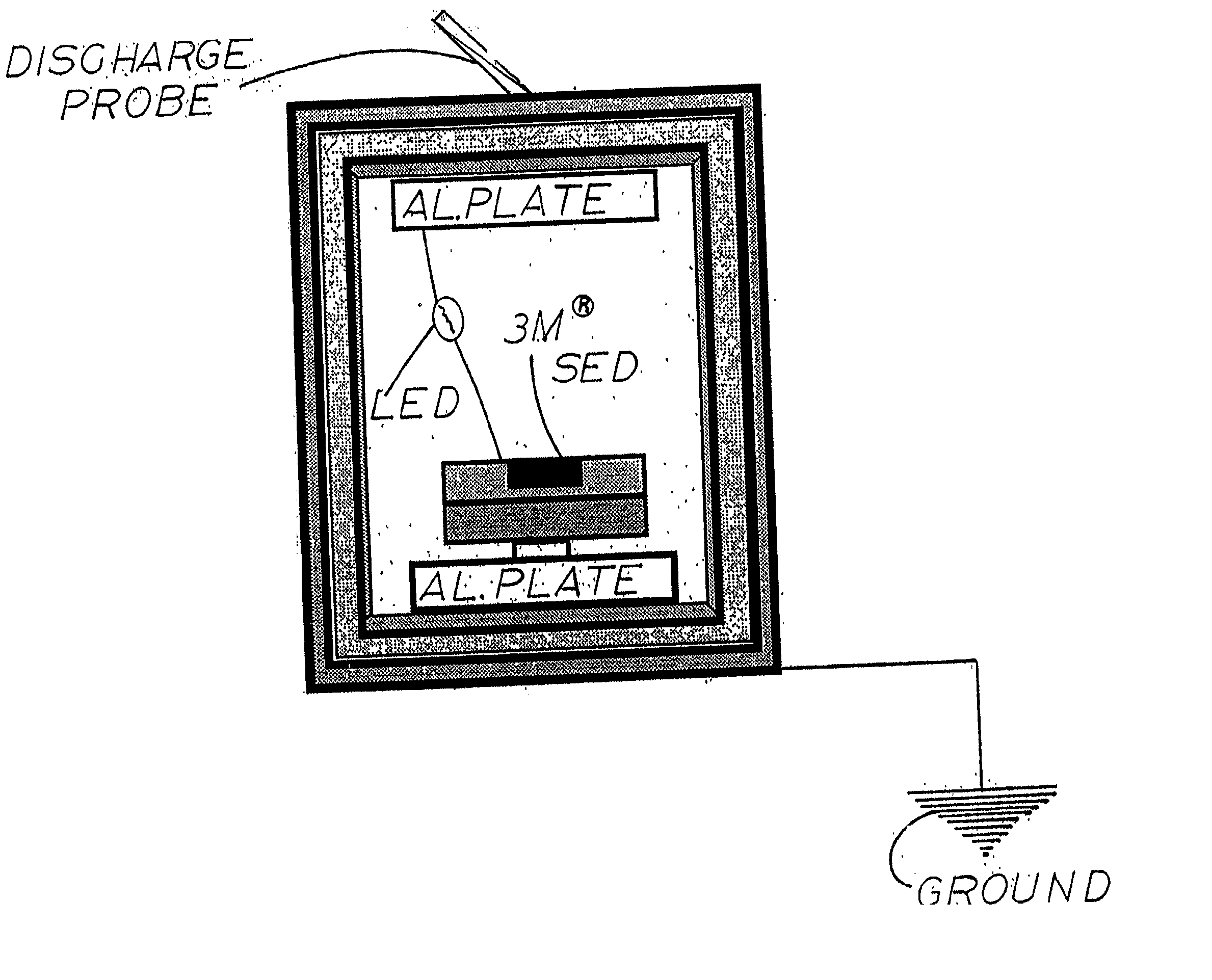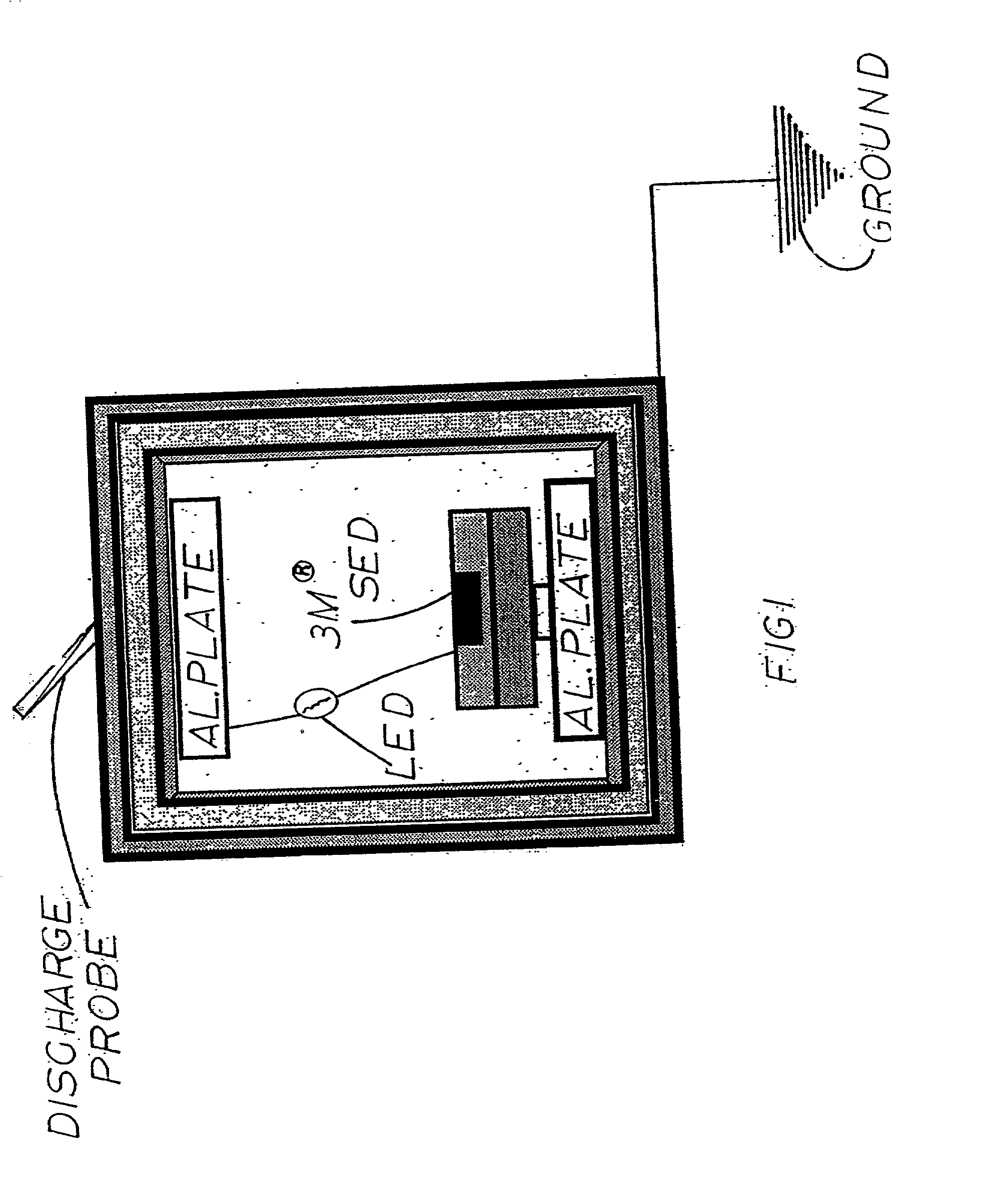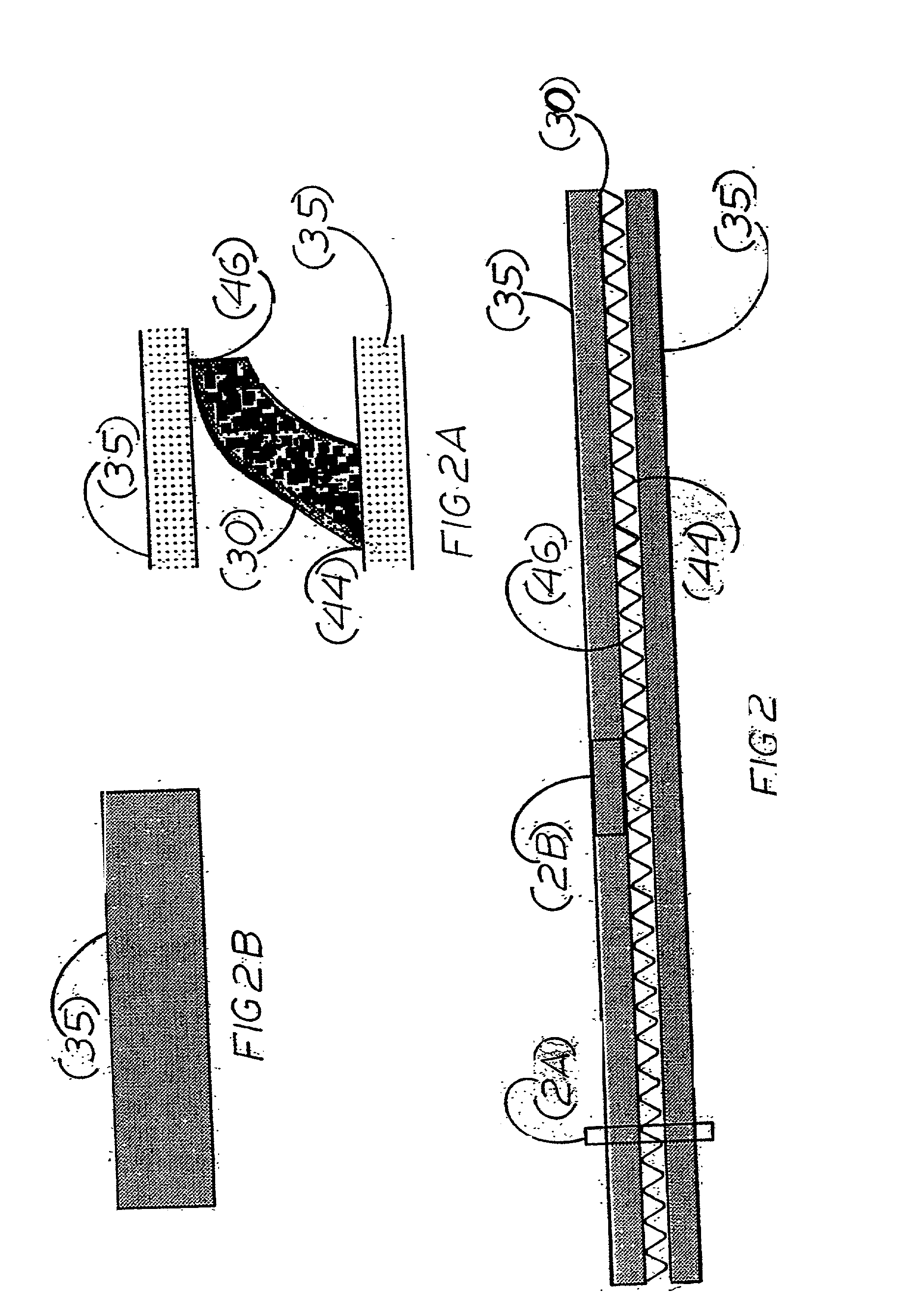Dissipative layer suitable for use in protective package
a technology of protective packaging and dissipative layer, which is applied in the field of dissipative, can solve the problems of lightning bolt or high voltage discharge to ground, problems that cannot be detected immediately, or can take years to be solved
- Summary
- Abstract
- Description
- Claims
- Application Information
AI Technical Summary
Problems solved by technology
Method used
Image
Examples
example i
[0137]
3 MATERIAL SPECIFICATIONS STATIC DECAY: I Standard Rate of decay shall be less than 2.0 seconds II Results: Average 0.4 seconds @ 12% RH 73.degree. F. III Method: EIA-541, Appendix F, + / -1 Kv to + / -l 00 v SURFACE RESISTANCE IN OHMS: I Standard: Less than 1.0 .times. 10.sup.11 ohms II Results: 5.3 .times. 10.sup.6 ohms -4.5 .times. 10.sup.9 ohms III SHIELDING MEDIUM: IV Results: 1.0 .times. 10.sup.2 ohms -3.0 .times. 10.sup.3 ohms V Method: EOS / ESD S11.11-1993 @ 12% RH 73.degree. F. VOLUME RESISTANCE IN OHMS-CM. I Standard: Less than 1.0 .times. 10.sup.11 ohms-cm II Results: 5.3 .times. 10.sup.6-10 ohms-cm III Method: EOS / ESD S11.12-1995 (PROPOSED) @ 12% RH 73.degree. F. STATIC SHIELDING: I Requirement: Integrity of 3 M Sensor @ 100 Volts for 4 kv & 10 kv II Results: Passed 4 kv & 10 kv III Method. 3 M 753-ESD Simulator Unit & 3 M Sensors Meets EIA-541, appendix E, Capacitive Probe Test RECYCLABILITY: I Requirement: 100% recyclability to recycling centers II Results: Requiremen...
PUM
 Login to View More
Login to View More Abstract
Description
Claims
Application Information
 Login to View More
Login to View More - R&D
- Intellectual Property
- Life Sciences
- Materials
- Tech Scout
- Unparalleled Data Quality
- Higher Quality Content
- 60% Fewer Hallucinations
Browse by: Latest US Patents, China's latest patents, Technical Efficacy Thesaurus, Application Domain, Technology Topic, Popular Technical Reports.
© 2025 PatSnap. All rights reserved.Legal|Privacy policy|Modern Slavery Act Transparency Statement|Sitemap|About US| Contact US: help@patsnap.com



